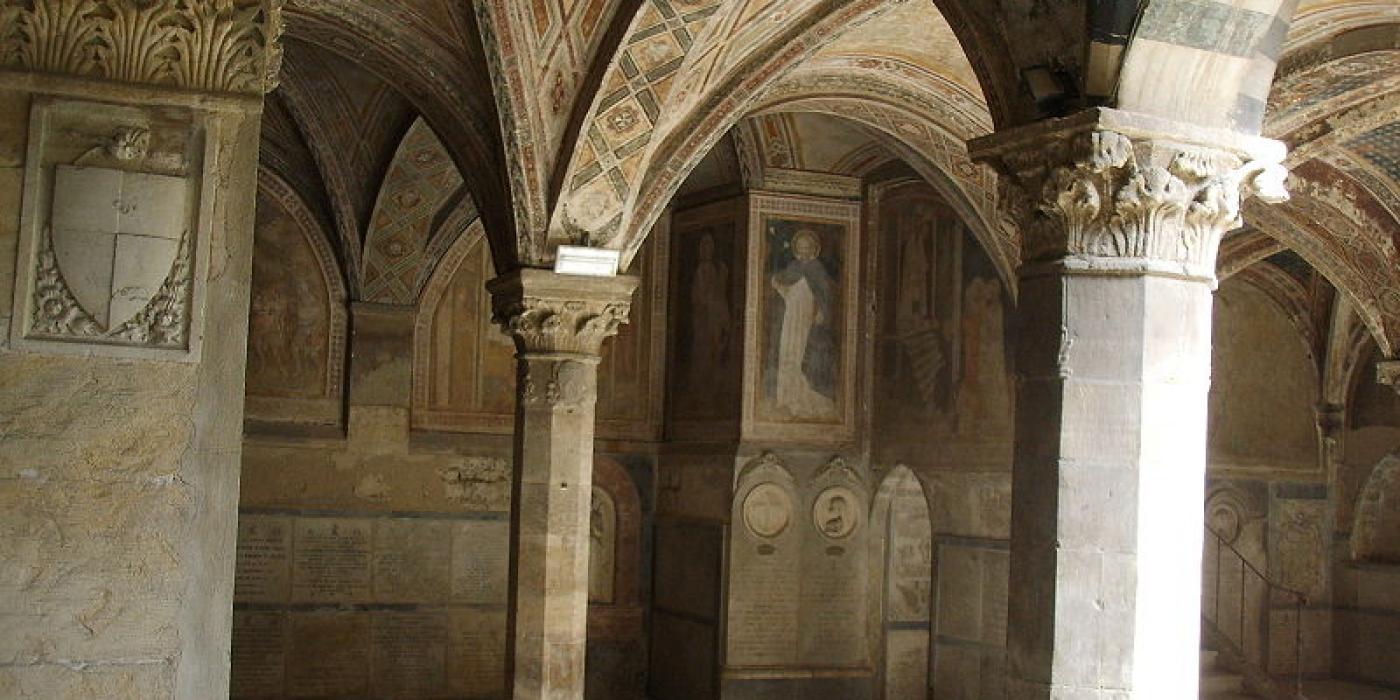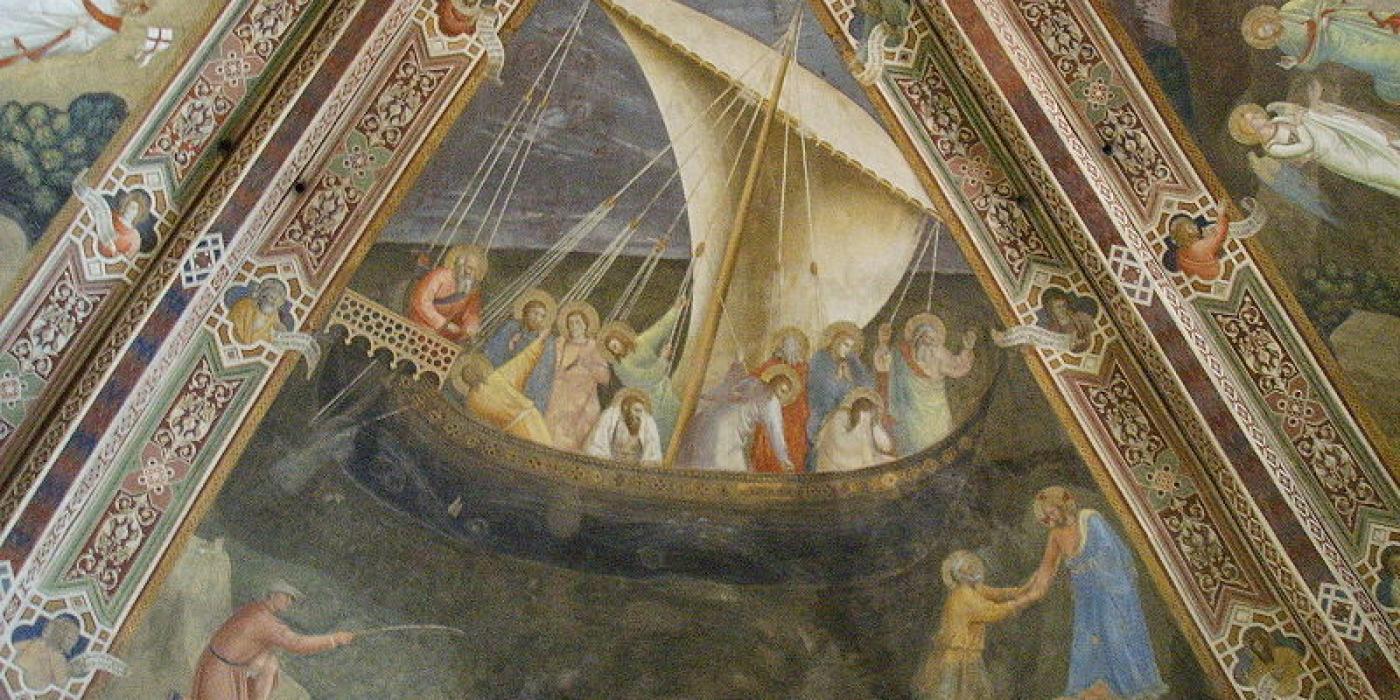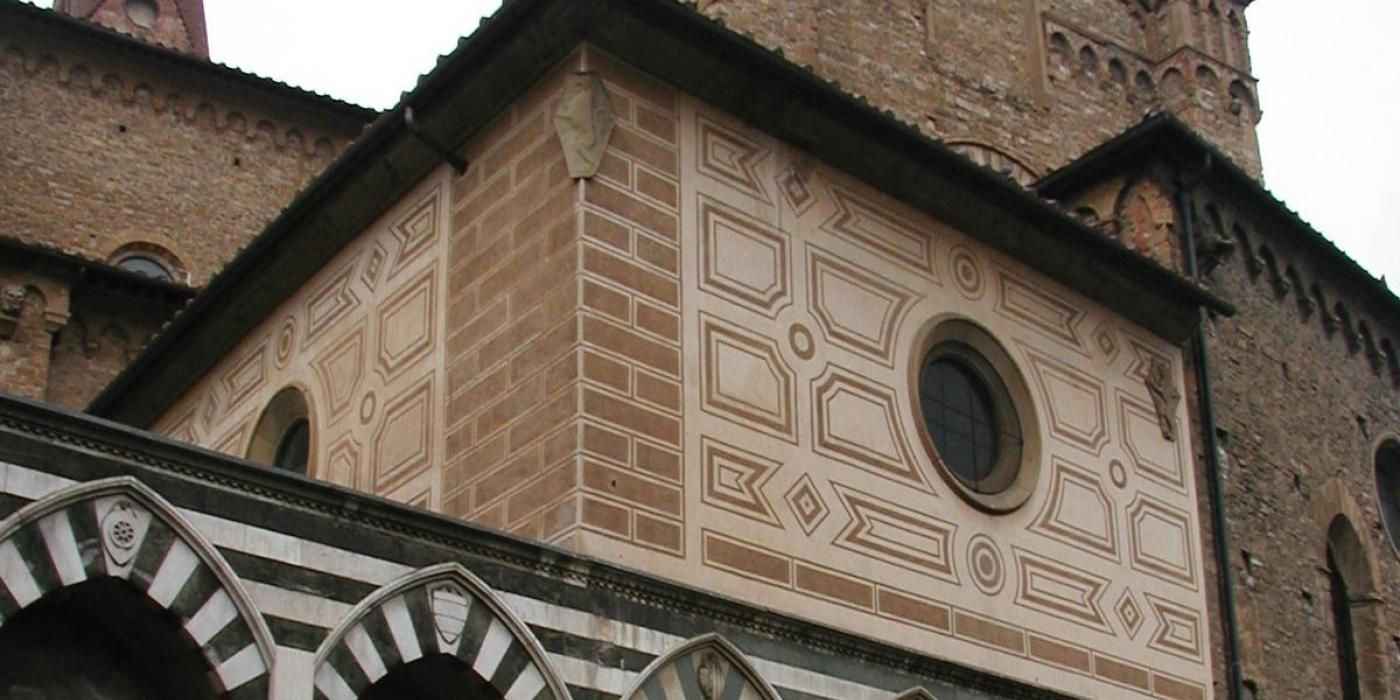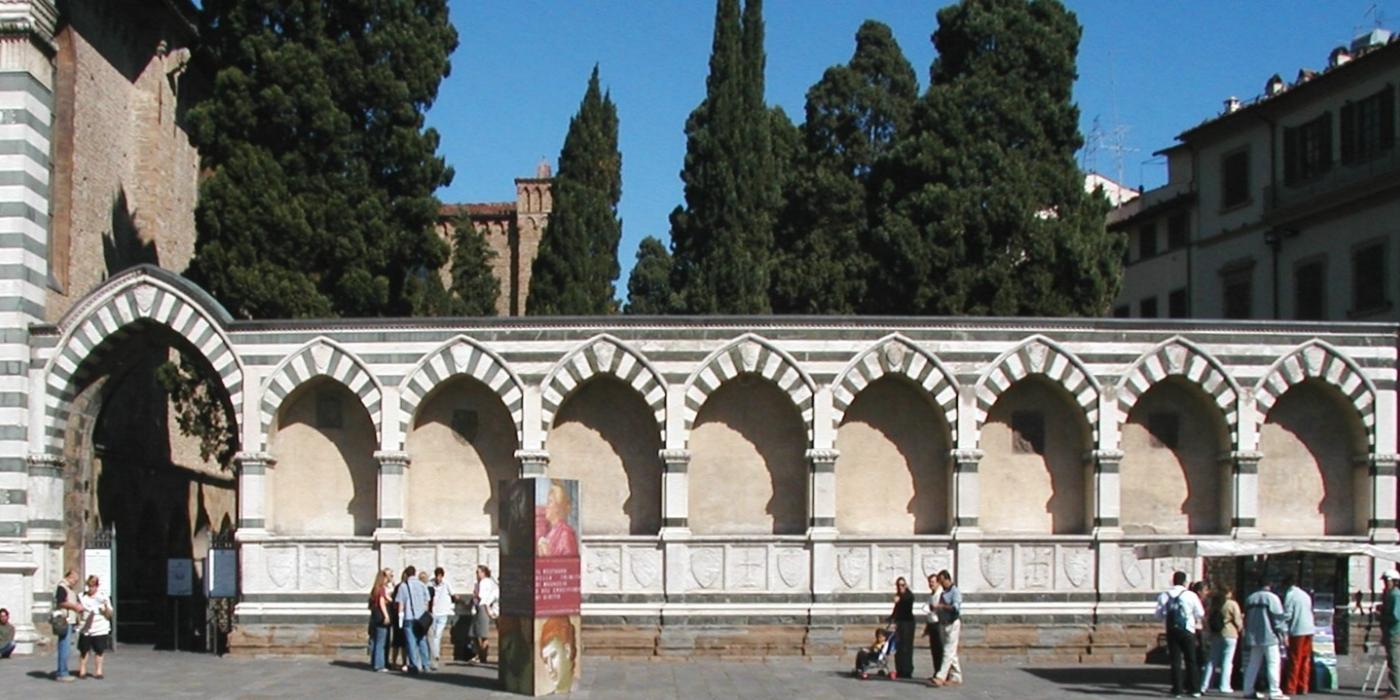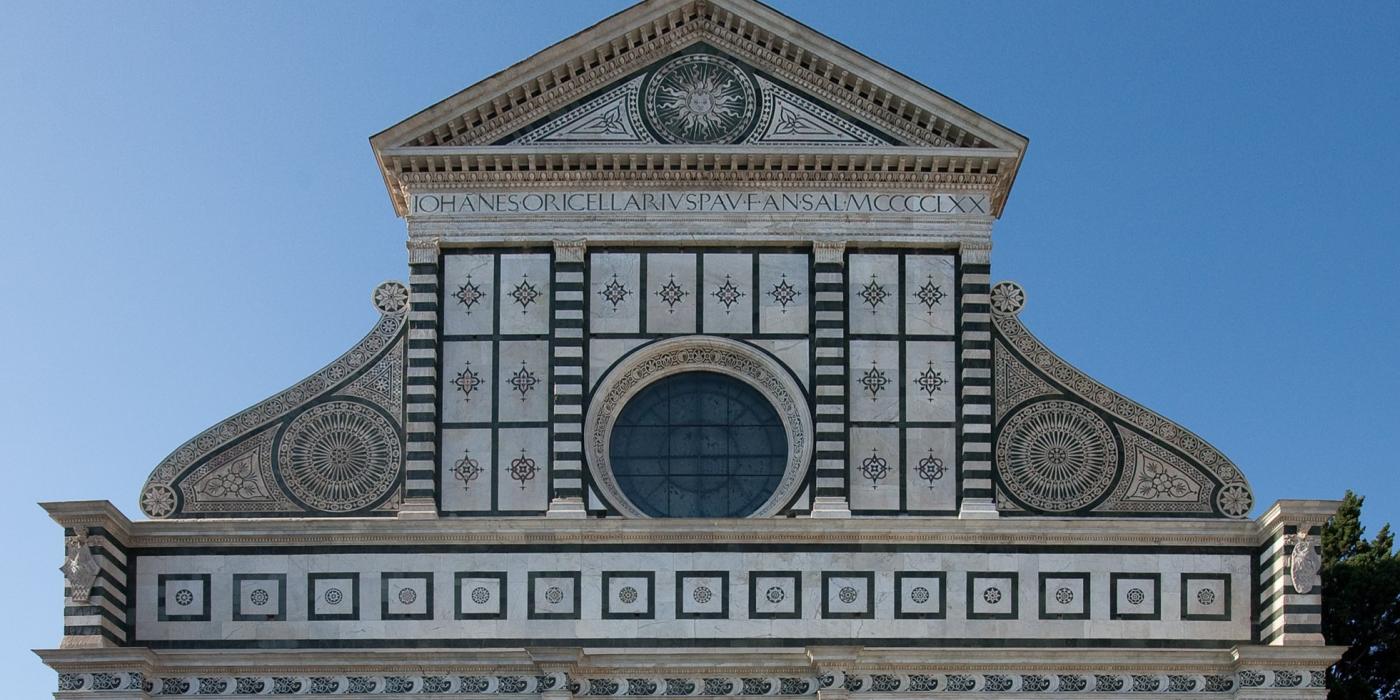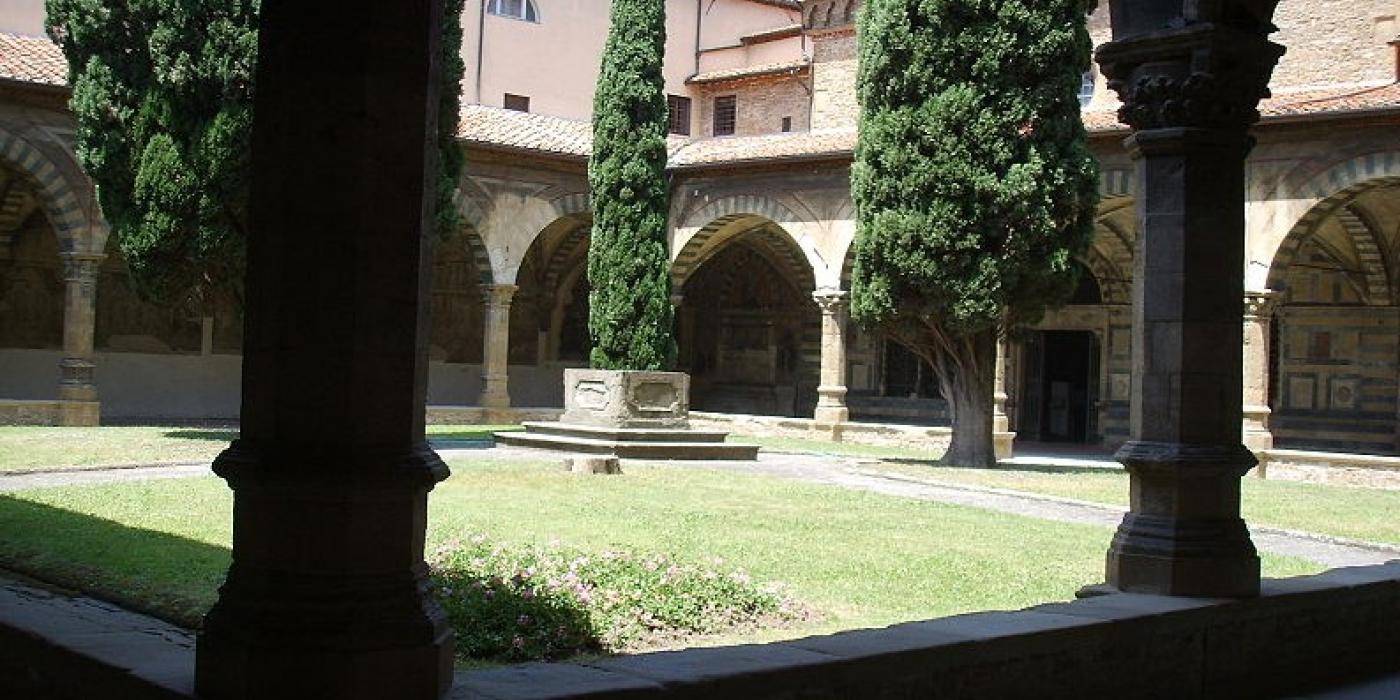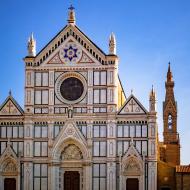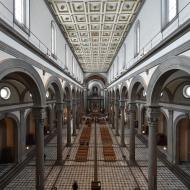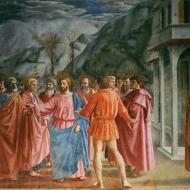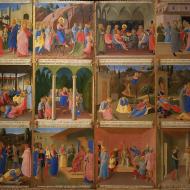The extensive museum complex of Santa Maria Novella includes the church, a large 14th-century Dominican Basilica, and its adjacent monumental cloisters. The church’s magnificent Renaissance façade is characterised by white and green marbles; the lowest level is in the Gothic style while the upper section was completed in 1470 upon design of the great architect Leon Battista Alberti.
The basilica preserves numerous late Medieval and Renaissance frescoed decorations and houses countless works like the large Crucifix painted by Giotto, the detached fresco of the Trinity by Masaccio, the paintings of heaven and hell in the Strozzi di Mantova Chapel by Nardo and Andrea di Cione (also known as Orcagna), the Nativity by Sandro Botticelli, the high chapel or Tornabuoni Chapel frescoed by Domenico Ghirlandaio and his workshop, the Strozzi Chapel by Filippino Lippi and various 16th-century altarpieces.
The visit extends through the first two cloisters of the ancient convent. The first cloister is called Chiostro Verde for the grisaille fresco decorations of the Stories of the Genesis by Paolo Uccello and other artists in the first half of the 15th century (the most important of which have been removed from the wall and, in a recent restoration, placed in the adjacent museum). The cloister itself dates, rather, to the 1330s and part of this expansion is the Spanish Chapel frescoed by Andrea di Bonaiuto. The Cappella degli Ubriachi and the ancient Refectory house a permanent exhibition of gold objects, sacred furniture and liturgical vestments, part of the ancient Treasury of the Church, and a series of paintings.
The basilica preserves numerous late Medieval and Renaissance frescoed decorations and houses countless works like the large Crucifix painted by Giotto, the detached fresco of the Trinity by Masaccio, the paintings of heaven and hell in the Strozzi di Mantova Chapel by Nardo and Andrea di Cione (also known as Orcagna), the Nativity by Sandro Botticelli, the high chapel or Tornabuoni Chapel frescoed by Domenico Ghirlandaio and his workshop, the Strozzi Chapel by Filippino Lippi and various 16th-century altarpieces.
The visit extends through the first two cloisters of the ancient convent. The first cloister is called Chiostro Verde for the grisaille fresco decorations of the Stories of the Genesis by Paolo Uccello and other artists in the first half of the 15th century (the most important of which have been removed from the wall and, in a recent restoration, placed in the adjacent museum). The cloister itself dates, rather, to the 1330s and part of this expansion is the Spanish Chapel frescoed by Andrea di Bonaiuto. The Cappella degli Ubriachi and the ancient Refectory house a permanent exhibition of gold objects, sacred furniture and liturgical vestments, part of the ancient Treasury of the Church, and a series of paintings.
Information:
Address:
piazza Stazione 4 / piazza Santa Maria Novella 18, 50123 - Firenze, FIPhone:
055 282187 / 055 219257
Access notes:
Direct access from the ticket office and entry into the first available visit slot.
Last admission one hour before closing.
Access for disabled:
Photo gallery
Museum timetables:
Related museums
